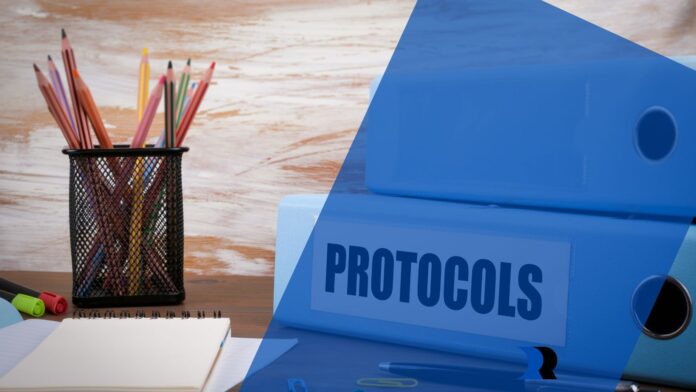The Internet of Things (IoT) isn’t a single technology — it’s a web of gadgets, sensors, and systems trying to “talk” to each other.Think about billions of gadgets, from tiny sensors in homes to big equipment in factories. Without a shared language, the result would be chaos. Protocols give them rules and vocabulary, so a soil sensor in a farm field can send useful data to a cloud app miles away.
It may sound straightforward, but it isn’t. Some protocols are feather-light, designed for coin-cell powered sensors. Others are heavy-duty, made for streaming large volumes of information in real time. To cover all details, we need to walk through the main categories, their strengths, and where they’re actually used.
Why Protocols Matter in IoT
Think about it: what good is a “smart” device if it can’t share data? Protocols solve that. They make sure devices from different makers still understand each other. They also keep energy use low, deal with shaky networks, and add security on top.
Choosing wrong can ruin a project. A smart light bulb doesn’t need the same backbone as a hospital monitor. That’s why protocol choice is more than a tech detail — it’s the foundation.
Broad Categories
Engineers usually sort IoT protocols into layers. It’s not rigid, but it helps.
- Application protocols: handle the actual messages between devices and apps.
- Network and transport protocols: make sure data finds its path reliably.
- Link and physical protocols: deal with the medium — radio waves, cables, etc.
This layered approach keeps systems flexible.
Application Layer
MQTT
MQTT (Message Queuing Telemetry Transport) is the workhorse of IoT. Simple, lightweight, and based on a publish/subscribe model. Devices can “publish” their data and anyone “subscribed” can get it.
- Great for: sensors, wearables, smart homes.
- Strength: tiny bandwidth, easy to set up.
- Weakness: not built for heavy real-time loads.
CoAP
CoAP (Constrained Application Protocol) feels like HTTP’s little sibling. It’s RESTful, works on constrained devices, and even supports multicast.
- Great for: lighting, small controllers.
- Strength: designed for resource-starved devices.
- Weakness: needs extra security layers.
AMQP
AMQP is bigger, heavier, and meant for reliability. If a message must arrive, even after a failure, AMQP is the choice.
- Great for: banking, logistics.
- Strength: guaranteed delivery.
- Weakness: more demanding on resources.
HTTP/HTTPS
Not really made for IoT, but still widely used. Why? Because developers already know it.
- Great for: smart appliances with web dashboards.
- Strength: universal.
- Weakness: eats power and bandwidth.
Network and Transport
6LoWPAN
IPv6 over Low-Power Wireless Personal Area Networks allows tiny devices to speak the language of the internet.
- Use: smart meters, environmental sensors.
- Pro: internet-ready.
- Con: setup complexity at scale.
RPL
This routing protocol adapts to unstable links. If one path fails, data finds another.
- Use: industrial monitoring.
- Pro: energy-aware.
- Con: complicated for huge networks.
TCP vs UDP
TCP ensures delivery. UDP doesn’t, but it’s faster. Simple trade-off.
- TCP: medical data, where accuracy matters.
- UDP: video streams, gaming sensors, where speed wins.
Link and Physical Layers
Bluetooth & BLE
Classic Bluetooth vs its low-energy sibling BLE. BLE enables devices run for months on a single button battery.
- Use: trackers, smart locks.
- Pro: energy efficiency.
- Con: short range.
Zigbee
Mesh network builder. Devices relay messages, extending coverage.
- Use: home automation, industry.
- Pro: reliable mesh.
- Con: slower data speeds.
Z-Wave
Similar to Zigbee, but narrower vendor ecosystem. Known for interoperability among certified devices.
- Use: home lighting, alarms.
- Pro: plays nicely with others.
- Con: proprietary.
LoRaWAN
Long range, low power. Perfect for farms, cities, logistics.
- Pro: kilometers of reach.
- Con: low data rates.
NB-IoT and LTE-M
Cellular-based protocols. Wide coverage, strong security.
- Use: vehicles, asset tracking.
- Pro: piggybacks on existing mobile networks.
- Con: depends on carriers.
Security Considerations
IoT without security is a nightmare. Protocols bring tools like TLS (for MQTT) or DTLS (for CoAP). Cellular systems add their own encryption. But the protocol is only part of it. Developers need to build secure firmware, gateways, and cloud links too.
How to Choose Wisely
So how do you pick? Ask:
- How much power do devices have?
- How much data will they send?
- How far apart are they?
- How many devices will join?
- How strict is security?

The answers point toward the right tool. Sometimes the best answer is a mix: lightweight protocol at the device level, cellular for the gateway, secure HTTP for the cloud.
Where It’s Headed
IoT isn’t slowing down. Protocols are evolving to handle billions more devices. IPv6 adoption is rising, mesh networks are growing smarter, and hybrid setups are becoming normal. Interoperability is still the holy grail — making sure a sensor from one maker and a hub from another work together seamlessly.
Security will remain the biggest challenge. With more devices comes more attack surfaces. Protocols will need to bake in stronger safeguards while staying light enough for small hardware.
Conclusion
IoT protocols are the glue holding the connected world together. Without them, devices are just isolated gadgets. With them, they form ecosystems — homes that respond automatically, factories that self-monitor, cities that adapt in real time.
From MQTT to LoRaWAN, from CoAP to LTE-M, each protocol brings its own trade-offs. There’s no one-size-fits-all solution. The smartest designs choose carefully, sometimes mixing and matching.
If the goal is to build systems that last, scale, and stay secure, understanding these protocols isn’t optional — it’s the starting point. For more insights into IoT development and future trends, explore Vakoms.com.


